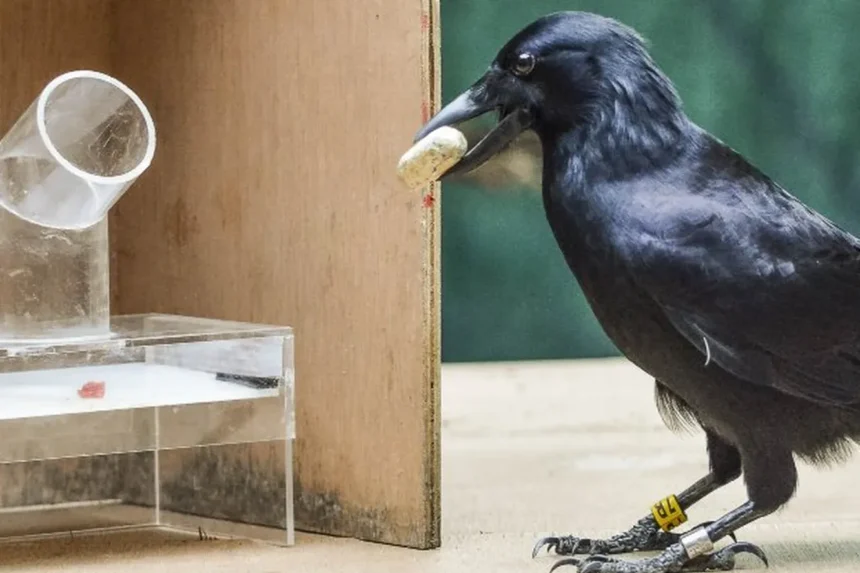Through a series of challenging tests, scientists have proven that crows are capable of complex planning of their actions and can gradually develop a plan for various situations.
As you know, crows are incredibly cunning and intelligent creatures. Despite being separated from humans by 620 million years of independent evolution, they still amaze researchers with their complex behavioral patterns. Not long ago, scientists found that the crows of New Caledonia can, like chess players, plan their actions several steps ahead, choosing the appropriate one from three behavioral options and even using available tools to solve assigned problems!
Over the past 20 years, these amazing birds have repeatedly shown scientists how smart they are. However, to reliably find out what is happening inside the brain of a bird and to see how its mind works is challenging for obvious reasons. To understand whether ravens are capable of long-term planning, scientists have identified two types: “online” planning (i.e., in real-time) and preliminary planning.
The first option involves drawing up a plan in a matter of moments. Essentially, it’s a chain: you plan a move, make it, then evaluate the next one, make it again, and so on. But preliminary planning is just drawing up plans in the usual sense. We take a situation, analyze it, devise solutions in several successive steps, and implement them.
Researchers have developed a clever test that reveals the true potential of crow intelligence. The test required the crows to use a short stick to remove a stone from a narrow tube. After this, the stone must be placed in another tube using a long stick – this will release a platform with a piece of tasty meat. The difficulty is that a wooden shield isolated each task stage so the crow could only see one part of the task at a time. To make the test even more complex, the scientists randomly changed the positions of the two tubes so that the crow could navigate by memory and find the correct tool.
Why is all this needed? To pass the test, the crow must mentally remember the location of a long stick, a stone, and meat and then use this knowledge to formulate a plan. Solving such a problem with online planning would lead to errors, so this test was ideal for the study.
Surprisingly, many crows passed this test the first time with exceptional results. This proves the fact that they are capable of complex step-by-step planning. The crows of New Caledonia are still of great interest to scientists because they are handy tools for understanding evolutionary patterns of behavior. Thus, you can access fundamental knowledge – the evolution of the planning skill itself, which is crucial for almost any type of activity for animals and humans.
How to distinguish a crow from a raven
Crow and raven are two different species of birds that belong to the corvid family. They have some differences:
The crow is usually smaller in size than the raven. The crow has black plumage, and the raven has gray plumage. The crow has a higher, shrill voice, while the raven makes a more profound, rougher sound.
Crows usually live in flocks, while raven prefer solitude or live in pairs.
Crows feed mainly on carrion, while raven feed primarily on insects, small animals, and grain.
Bonus: 5 Fun Facts About Crows
- Crows live a very long time – up to 15 years in the wild and up to 30 years in captivity.
- They can develop long-term friendships with their and other animal species, including humans and pets.
- Crows can remember the faces of people and other animals for a long time. Interestingly, they can also pass this information on to other crows, creating a cultural memory for the colony.
- In different parts of the world, these birds exhibit other cultural characteristics, such as unique tool use or hunting methods, indicating this species’s high adaptability level.
- Crows can be cunning and even use it for their purposes. They may set traps for other animals to steal food from them or divert their attention from resources.








